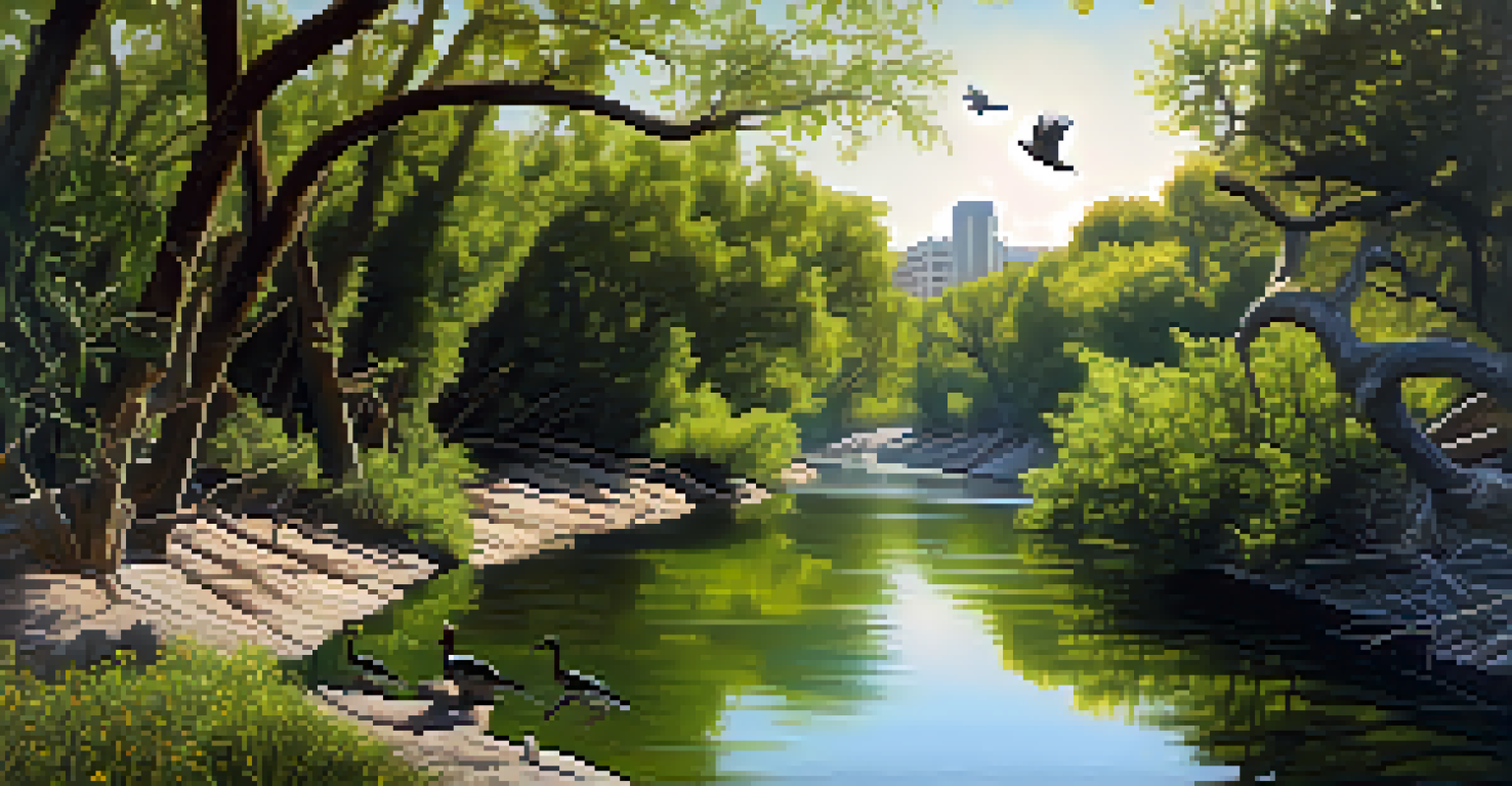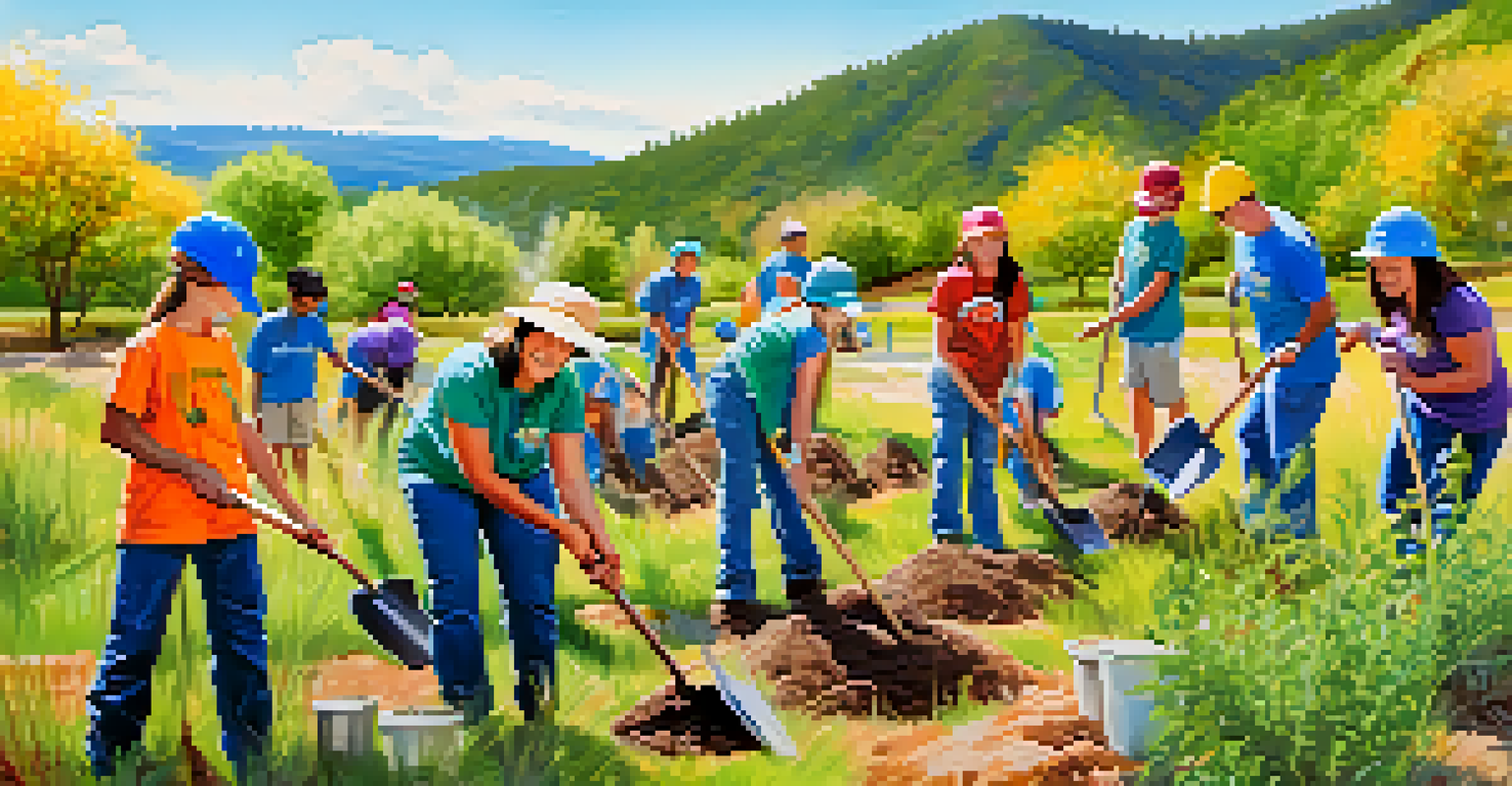Restoration Projects for Local Wildlife Habitats in LA

Understanding the Importance of Habitat Restoration
Habitat restoration is crucial for maintaining biodiversity, especially in urban areas like Los Angeles. As cities expand, wildlife habitats often shrink, leading to a decline in local species. By restoring these areas, we not only help animals thrive but also enhance the overall health of our ecosystems.
The best time to plant a tree was twenty years ago. The second best time is now.
In LA, where urbanization meets natural beauty, restoration efforts can create a balance. Projects often focus on reintroducing native plants and removing invasive species, which is vital for supporting local wildlife. This creates safe spaces for animals to flourish, ensuring that nature and urban life can coexist.
Moreover, restoring habitats can have a positive impact on communities. Green spaces provide recreational opportunities, improve air quality, and even boost property values. By investing in these projects, we benefit both wildlife and the quality of life for residents.
Notable Restoration Projects in Los Angeles
Several notable projects have made significant strides in habitat restoration across the LA region. One standout is the Los Angeles River Revitalization Project, which aims to restore natural habitats along the riverbanks. This initiative not only enhances biodiversity but also revitalizes the area for public enjoyment.

Another impressive effort is the Ballona Wetlands Restoration Project, which focuses on restoring one of California’s last remaining coastal wetlands. By improving water quality and re-establishing native flora and fauna, this project plays a critical role in supporting migratory birds and other wildlife.
Habitat Restoration Benefits Wildlife
Restoring habitats in urban areas like Los Angeles supports local wildlife and enhances ecosystem health.
These projects highlight the collaborative efforts between local governments, non-profits, and community members. Their successes serve as inspiring examples of what can be achieved when people come together for a common goal: to restore and protect our natural habitats.
The Role of Community Involvement in Restoration
Community involvement is a key factor in the success of habitat restoration projects. Local volunteers often participate in planting native species, cleaning up areas, and monitoring wildlife populations. This hands-on approach not only helps the environment but also fosters a sense of ownership and pride among residents.
In every walk with nature, one receives far more than he seeks.
Educational programs play a vital role in engaging the community. Workshops and events that teach participants about local ecosystems encourage greater awareness and appreciation for wildlife. When people understand the importance of these habitats, they are more likely to support conservation efforts.
Moreover, community engagement can lead to lasting change. When residents actively participate in restoration, they create a network of advocates who can influence local policies and funding decisions. This grassroots approach often results in more sustainable and impactful outcomes for wildlife habitats.
Challenges Facing Restoration Efforts in LA
Despite the successes in habitat restoration, several challenges remain. Urban development continues to encroach on natural areas, limiting the space available for wildlife. As cities expand, finding a balance between growth and conservation becomes increasingly difficult.
Additionally, climate change poses a significant threat to restoration efforts. Rising temperatures and changing precipitation patterns can disrupt established ecosystems, making it harder for native species to survive. Restoration projects must adapt to these changes to ensure long-term success.
Community Involvement is Key
Active community participation in restoration projects fosters ownership and leads to greater conservation success.
Funding is another challenge that many organizations face. While some projects receive government support, many rely on grants and donations. Securing consistent funding is crucial for maintaining ongoing restoration efforts and ensuring that they can address emerging challenges.
Success Stories: Thriving Wildlife Post-Restoration
Successful restoration projects have led to remarkable recoveries in local wildlife populations. For instance, the restoration of the San Gabriel River has resulted in a resurgence of fish species that had previously been in decline. This success story illustrates the potential for positive change when habitats are restored.
Bird populations, too, have benefited from these efforts. The revitalization of wetlands and parks has provided essential stopover sites for migratory birds. These areas not only offer food and shelter but also create opportunities for birdwatching and eco-tourism, enriching the community.
These success stories remind us that restoration is not just about saving species; it’s about restoring ecosystems that can sustain future generations. Each thriving population is a testament to the hard work and commitment of those involved in these projects.
Future Directions for Wildlife Habitat Restoration
Looking ahead, the future of wildlife habitat restoration in LA appears promising. Innovative approaches, such as using technology for monitoring and data collection, are enhancing restoration efforts. Tools like drones and remote sensing help track changes in habitats, making it easier to assess the success of projects.
Collaboration between various stakeholders continues to evolve, with partnerships forming between government agencies, non-profits, and academic institutions. These collaborative efforts enable the sharing of resources and expertise, ultimately leading to more effective restoration strategies.
Challenges to Restoration Efforts
Urban development, climate change, and funding issues pose significant challenges to ongoing habitat restoration projects.
Furthermore, there is a growing emphasis on climate resilience in restoration projects. By incorporating climate adaptation strategies, such as planting drought-tolerant species, these initiatives can better withstand future challenges. This proactive approach ensures that habitats remain vibrant and resilient, even in the face of uncertainty.
How You Can Get Involved in Local Restoration Efforts
Getting involved in local habitat restoration is easier than you might think! Many organizations offer volunteer opportunities for planting, clean-ups, and educational events. By participating, you can directly contribute to the health of local ecosystems while meeting like-minded individuals.
Additionally, supporting local conservation organizations can make a significant impact. Whether through donations or spreading the word about their initiatives, your involvement can help sustain ongoing projects. Every bit of support counts in the fight to protect wildlife habitats.

Lastly, consider advocating for policies that support habitat restoration in your community. Engaging with local leaders and participating in public meetings can help raise awareness about the importance of these efforts. By becoming a voice for wildlife, you can help shape a brighter future for our local ecosystems.